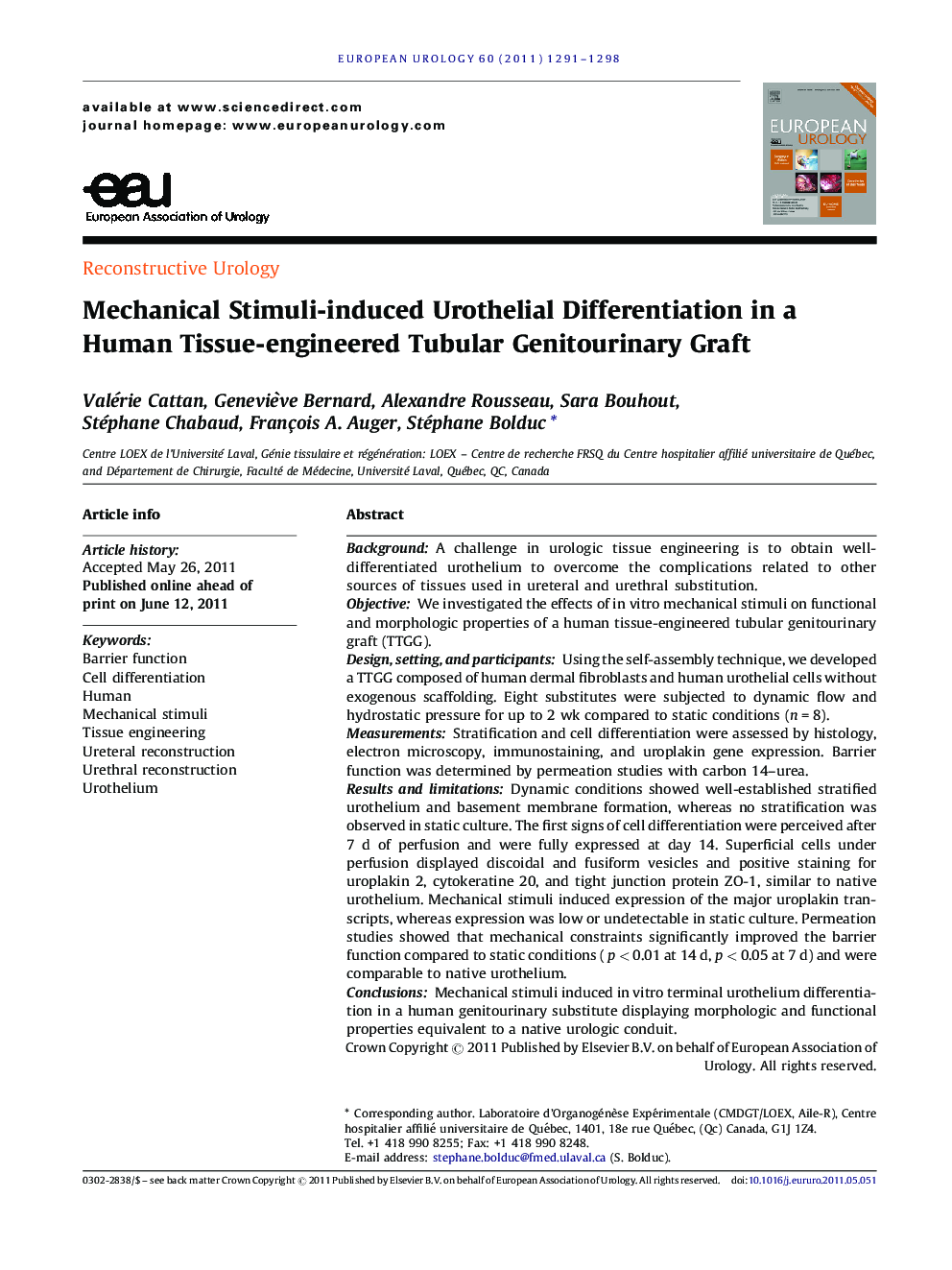| کد مقاله | کد نشریه | سال انتشار | مقاله انگلیسی | نسخه تمام متن |
|---|---|---|---|---|
| 3922959 | 1600011 | 2011 | 8 صفحه PDF | دانلود رایگان |

BackgroundA challenge in urologic tissue engineering is to obtain well-differentiated urothelium to overcome the complications related to other sources of tissues used in ureteral and urethral substitution.ObjectiveWe investigated the effects of in vitro mechanical stimuli on functional and morphologic properties of a human tissue-engineered tubular genitourinary graft (TTGG).Design, setting, and participantsUsing the self-assembly technique, we developed a TTGG composed of human dermal fibroblasts and human urothelial cells without exogenous scaffolding. Eight substitutes were subjected to dynamic flow and hydrostatic pressure for up to 2 wk compared to static conditions (n = 8).MeasurementsStratification and cell differentiation were assessed by histology, electron microscopy, immunostaining, and uroplakin gene expression. Barrier function was determined by permeation studies with carbon 14–urea.Results and limitationsDynamic conditions showed well-established stratified urothelium and basement membrane formation, whereas no stratification was observed in static culture. The first signs of cell differentiation were perceived after 7 d of perfusion and were fully expressed at day 14. Superficial cells under perfusion displayed discoidal and fusiform vesicles and positive staining for uroplakin 2, cytokeratine 20, and tight junction protein ZO-1, similar to native urothelium. Mechanical stimuli induced expression of the major uroplakin transcripts, whereas expression was low or undetectable in static culture. Permeation studies showed that mechanical constraints significantly improved the barrier function compared to static conditions (p < 0.01 at 14 d, p < 0.05 at 7 d) and were comparable to native urothelium.ConclusionsMechanical stimuli induced in vitro terminal urothelium differentiation in a human genitourinary substitute displaying morphologic and functional properties equivalent to a native urologic conduit.
Journal: European Urology - Volume 60, Issue 6, December 2011, Pages 1291–1298